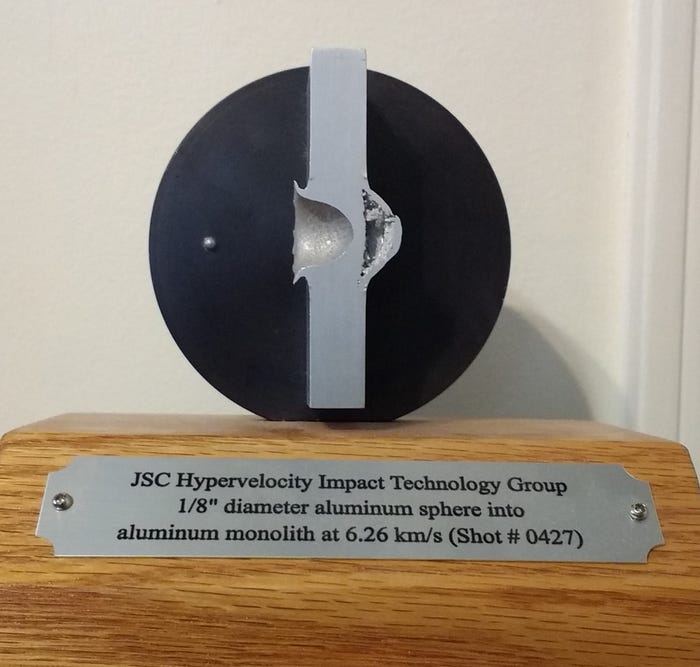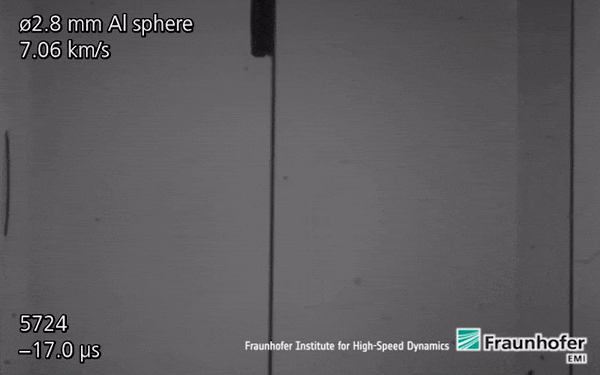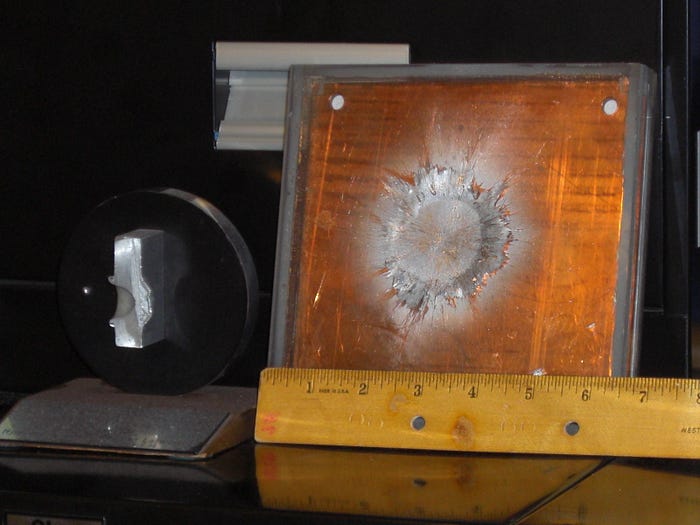Kessler Syndrome: What Happens When Satellites Collide
This is a transcript of the documentary above.
Donald Kessler: The worst case scenario is that you end up creating enough debris that it’s not cost-effective to depend on space. Now, that may take a long time, but because it’s a non-reversible process, once you’ve reached a certain threshold where you’re generating debris from these collisions faster than it can be cleaned out, it’ll just continually get worse unless you can do something drastic.
Holger Krag: If we continue operating the way we do today, we will have a disaster in 50 years, in 100 years. It compares quite nicely to the CO2 issue, and the climate on ground, so it’s not our generation suffering from all the CO2 released into the atmosphere, it is future generations, but it is our generation that has to take the action. And the space debris problem is quite similar.

DK: My name’s Don Kessler, I worked for NASA till 1996 as the senior researcher for orbital debris. I started the program back in 1979, and the program is still very active today. In the 1960s my main job was to define the interplanetary meteoroid environment.
At the time, the only space debris NASA had to be concerned about were meteoroids, many of which are generated from collisions in the asteroid belt. These asteroid collisions are a cascading phenomenon, meaning every collision creates more ammunition for future collisions. It’s a positive feedback loop.
Don was studying this phenomenon when he started to consider an interesting question:
DK: When will the same phenomenon start happening in the Earth’s orbit? When will this same kind of cascading occur with satellites? And it was just a matter of curiosity as to what that number may be, and actually when I did the calculations, I was really shocked at the answer that it would happen so soon.
Don published a paper in 1978 proposing this scenario, predicting that we’d start to see satellite collisions in Earth orbit by the year 2000. Just like in the asteroid belt, these satellite collisions would trigger a domino effect: creating a whole bunch of debris which causes more collisions, creating more debris, and so on. His main point: once the process starts, it’ll be nearly impossible to stop. This self-perpetuating phenomenon, this domino effect, became known as Kessler Syndrome.
The first accidental collision occurred in 1996, when a French satellite was struck by a piece of a rocket thruster that had exploded ten years earlier, severing its stabilization boom and, for the first time, demonstrating how entangled the orbital environment has become.
HK: In 2009 a collision happened that was by far more dramatic.
The event he’s referring to was the first collision between two intact satellites: the Russian satellite Kosmos and an American Iridium.

And that was the first catastrophic accidental collision that got everybody’s attention because not only did they realize how much debris is generated when something like that occurs but that we are now entering this phase of what we’re calling the Kessler Syndrome.
Just two years earlier the Chinese military conducted a controversial anti-satellite test, intercepting one of their own defunct weather satellites with a kinetic kill vehicle — a non-explosive missile which relies on sheer speed of impact to destroy its target. It blew the satellite to smithereens and created just a huge mess, it was really bad.

DK: And unfortunately it was something they should have known not to do.
Yeah, that’s because the US did the same thing back in 1985 — the first anti-satellite test, with more or less the same results.
DK: We at NASA tried to delay that or stop that because, we said it’s going to create enough debris that we’ll have to add more shielding to the space station which was planned to be launched a few years later. And nobody believed it would make that much debris, but it did.
All of these collisions, accidental or otherwise, make a big mess of junk zipping around the Earth called space debris. It accounts for 95% of the objects in Low Earth orbit, and comes in all shapes and sizes. It’s technically defined as any nonfunctional object in orbit, so there’s big stuff like rocket thrusters and defunct satellites, but the vast majority are little bits and pieces called fragmentation debris.

Many of these fragments come from explosions caused by residual fuel and other explosive energy sources self-igniting under the extreme conditions of space.
These explosions happen more often than you might think, and as catastrophic and messy as these explosions are, collisions are even worse due to the incredible amount of kinetic energy involved. At the velocities objects travel in Lower Earth Orbit (speeds known as hypervelocity) even an object as tiny as a screw can deliver an incapacitating strike to a satellite. In fact, NASA has repeatedly had to replace shuttle windows due to hypervelocity impacts by flecks of paint.

HK: These are velocities, we have no example nor anything that compares to that on ground. So the energy involved in these collisions is extremely high. A 1 cm object that size like a cherry hitting a satellite with 10 km/s, the energy released by this corresponds roughly to an exploding grenade. You can imagine what the satellite looks like after that.
DK: Yes, let me know show you something. This is something that was shot in the lab, it’s a projectile about the size of a BB, and it makes a crater into, this is solid aluminum, and this was only going about 5 km/s, about half the speed of what you would expect in space.

Most of this is happening in Low Earth Orbit, the 2000 km strip of space above our heads where we’ve packed the vast majority of our satellites, including the International Space Station and the Hubble Space Telescope. The most crowded section is between 500 and 1000 km up. It’s the densest region, it’s the Highway 401 of space.

DK: And that’s what’s creating the problem because we’ve crowded so much stuff in that small region. And the probability of collision goes as the square of the spatial density. So you double the number of satellites, you get four times as many collisions. Now, the space station usually flies around 300 km but the debris that’s generated at that higher altitude is being thrown down and drifting down to the lower altitudes.
HK: If you look at the space station surface you will find craters everywhere, impact craters caused by debris everywhere. Whenever you bring hardware down and inspect it on ground you find craters of all sizes. What do we do with this? How do you protect the life of the astronauts? The only thing you can do is shielding.
And to protect against a hypervelocity impact you need a special type of lightweight shielding, called Whipple shielding.

DK: Let me show you something else. The same particle that caused this kind of damage [image below, left] only caused this kind of damage [image below, right]on a surface with a very minor amount of shielding on it. And that’s, it’s almost a liquid splattered onto that.

Most spacecraft utilize this type of shielding, which can withstand impacts from objects up to about one centimeter.
Objects larger than a softball are catalogued and tracked by the US Space Surveillance Network. Tracking is imprecise, but allows spacecraft to dodge some of the debris that comes too close. This only works for objects larger than 10 cm or so. Anything smaller can’t be reliably tracked.
For that reason, the most concerning objects are those between 1 and 10 cm; too large for shielding to withstand and too small to be tracked. These objects could incapacitate any spacecraft in their path, or worse. And with every future explosion and collision there will be more and more of these invisible projectiles going around.
The problem gets worse when you consider how long objects can remain in orbit. Depending on altitude, debris in Low Earth Orbit may remain there for years, decades, or centuries before their orbit naturally decays enough to re-enter the Earth’s atmosphere. For example, look no further than ENVISAT; a defunct 8-tonne satellite operated by the European Space Agency until it lost contact in 2012, becoming a massive piece of space junk in the densest region of Earth orbit. ENVISAT will remain in orbit for 200 years if not removed.

Experts hope to avoid an encore of ENVISAT and to mitigate Kessler Syndrome through the international adoption of two clean space policies. The first will prevent explosions by requiring so-called passivation of onboard energy sources.
HK: Meaning, residual fuel must be either depleted, burned, released through a valve, whatever. That’s number one: no more explosions.
DK: And the other is what we call a 25 year rule. Once you put something in orbit, after you finish using it you have 25 years to get it out.
Either by moving up to a designated “graveyard orbit” where it will pose minimal risk to active spacecraft or more ideally, lowering its altitude so it will burn up in the atmosphere sooner. These policies aren’t difficult to follow and are beginning to be adopted internationally.
HK: When we do these two things that would already make space flight pretty safe for the future. It would mean, if we do this systematically, the risk in the future would be almost the same as it is today. The mitigation measures they help to dampen the effect of the Kessler Syndrome, we are not talking about stopping it, we are talking about maintaining it on an acceptable level, the growth. But it will grow, even if we implement these two measures strictly. If we want to even prevent this growth, then we need to do active removal.
DK: We’ve already concluded that it’s going to take something like removing 500 intact objects over the next 100 years in order to stabilize the Low Earth Orbit environment again.
That works out to five objects per year for the next century, which at least seems achievable, right? The challenge though is that there’s no easy way to remove space debris.
HK: We need to approach the object that are not under control anymore, and attach to them, dock with them, rendezvous them, capture them somehow, and then get rid of them in a controlled way. You can imagine this is not so easy.
Experts are working on ways to remove debris, and there are several promising ideas in early development. There are reusable concepts like tethers and space tugs which can grab multiple objects per launch, which saves money. There are ground- or space-based lasers which can deorbit objects by kind of shooting them down, but these face political challenges. There are actually active satellites in space right now, the University of Surrey is controlling a spacecraft called RemoveDEBRIS which will use a harpoon to grab on to debris, that’s promising. And there’s another single-use option like ESA’s e.Deorbit, currently planned to retrieve and deorbit ENVISAT in 2023. Many of these ideas aren’t scalable, though, that’s the problem, they’re expensive and complicated, and missions like these are almost completely unprecedented. The pressure is on, though, because Kessler Syndrome isn’t waiting, and the consequences for space infrastructure are dire.

HK: Today only half of the satellites actually disappear from space within the 25 years that are recommended as the maximum on orbit time. We still have five explosions every year. If we continue and not improve the way we do spaceflight, then in a few decades some regions of space might not be useable anymore for spaceflight, or it might be much too risky to go there. And that might mean that we either lose services from space that we rely on today, or they get more expensive.
AI: Do you think something like Kessler Syndrome is inevitable? Are you optimistic that this can be managed properly, or do you think this is an inevitable issue for a spacefaring society?
HK: I think it can be managed, it can be managed. I do believe it’s time for young people to take charge and there’s a lot of work to be done, and there’s enough people involved today that I’m confident that it’s going to be done.
Much like other environmental and generational problems, Kessler Syndrome is invisible to us. When you look up at the night sky, you don’t see collisions and explosions and fragments of debris. If you’re lucky and the conditions are right, you might see one white speck drifting across the sky, a tiny testament to humankind’s highest collective ambitions. But that speck is at risk, along with all it represents, if we don’t address this invisible problem — because Kessler Syndrome isn’t waiting.
